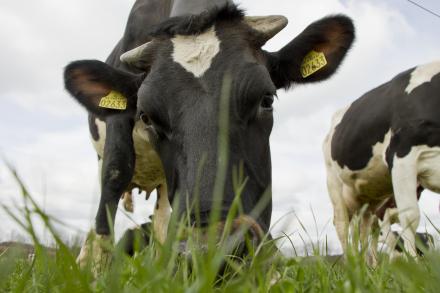A
new study reveals that Roundup herbicide enhances the growth of
aflatoxin-producing fungi, lending an explanation for the alarming
increase in fungal toxins recently discovered in U.S corn, and revealing
another way in which GM farming is seriously undermining food quality.
A new study lead by Argentinean researchers and published in the
Journal of Environmental Science and Health titled, "
Influence
of herbicide glyphosate on growth and aflatoxin B1 production by
Aspergillus section Flavi strains isolated from soil on in vitro assay,"
[1] adds to an increasing body of research indicating that glyphosate (aka
Roundup),
the primary herbicide used in GM agriculture, is seriously undermining
the quality of our global food supply, and may help to explain recent
observations that GM corn heavy markets, such as the U.S., have a
significant aflatoxin problem.
[2]
Researchers
from the Department of Microbiology and Immunology, National University
of Rio Cuarto, Cordoba, Argentina, set out to evaluate the effect of
glyphosate (Roundup) on the growth of aflatoxin B1 production by strains
of Aspergillus under different water availabilities on maize based
medium.
Aflatoxin B1, one of at least 14 different types, is a naturally
occurring mycotoxin that is produced by Aspergillus flavus and
Aspergillus parasiticus, two species of fungi that commonly effect
cereal grains. Known to be one of the most carcinogenic substances in
existence, aflatoxin B1 is classified by the International Agency for
Research on Cancer (IARC) as "
Group 1, carinogenic to humans,"
with an oral, rat LD50 (the dose that acutely kills 50% of a test
group) of 5mg/kg – compare that to a 6.4 mg/kg LD50 for potassium
cyanide, which is used in lethal injection.
The authors of the study pointed out that that little previous research has been performed on the role of
glyphosate
on the growth rate of aflatoxin-producing fungal species. The
researchers also described the relevance this information has to the
Argentinean corn market:
"Aspergillus section
Flavi and Nigri Argentina is the world's second biggest exporter of
maize (Zea mays L.), and was responsible roughly for 15 percent of the
world's maize exports in the last three years. During the harvest season
2011/2012 the maize production is expected to be of 20 million tons.
These cereal grains are colonize by several fungi communities, including
mycotoxigenic species."
Argentina's total
acreage dedicated to GM corn, while small in comparison to the U.S.
majority stake in the world market, is second only to the U.S. [See
figure 1]
Also,
Argentina's GM corn share in the total GM corn acreage of their country
is on par with the U.S. [see figured 2 below], indicating that their
environmental and toxicological situation in regard to the food quality
fallout from GM farming is likely very similar.
Figure 2: GM maize share in the total maize acreage of a country/Source:
GMO-Compass.org
Researchers Discover Roundup Enhances Growth of Aflatoxin-Producing Fungi
In
brief, the researchers discovered that all six different concentrations
of glyphosate tested decreased the lag phase of fungi growth
proportionately to the increase in glyphosate concentrations. In other
words, the
glyphosate enhanced the growth of the aflatoxin-producing Apergillus strains, and at concentrations
lower
than the range generally detected in Argentinean soils destined to crop
production, specifically an agricultural area belonging to the province
of Buenos Aires.
[3]
In the author's words:
"This
study has shown that the eight Aspergillus flavus and A. parasiticus
strains evaluated are able to grow effectively and produce AFs
[aflatoxins] in natural medium with high nutrient status over a range of
glyphosate concentrations under different aW [water activity]
conditions."
The figure below shows the influence of glyphosate on growth and aflatoxin B1 production:
Figure 3: Influence of glyphosate on aflatoxin
The discovery that
glyphosate enhances fungal growth contradicts several previous studies, including a 2007 study performed by US Department of Agriculture researchers,
[4]
which did not find that glyphosate increased Aspergillus flavus growth.
The authors noted that their findings are consistent with research on
similar fungal strains, such as Fusarium,
[5] which possesses high tolerance to applied doses of glyphosate, and Rust fungi and Blight fungi,
[6] [7] which exhibit enhanced growth on glyphosate-amended media.








